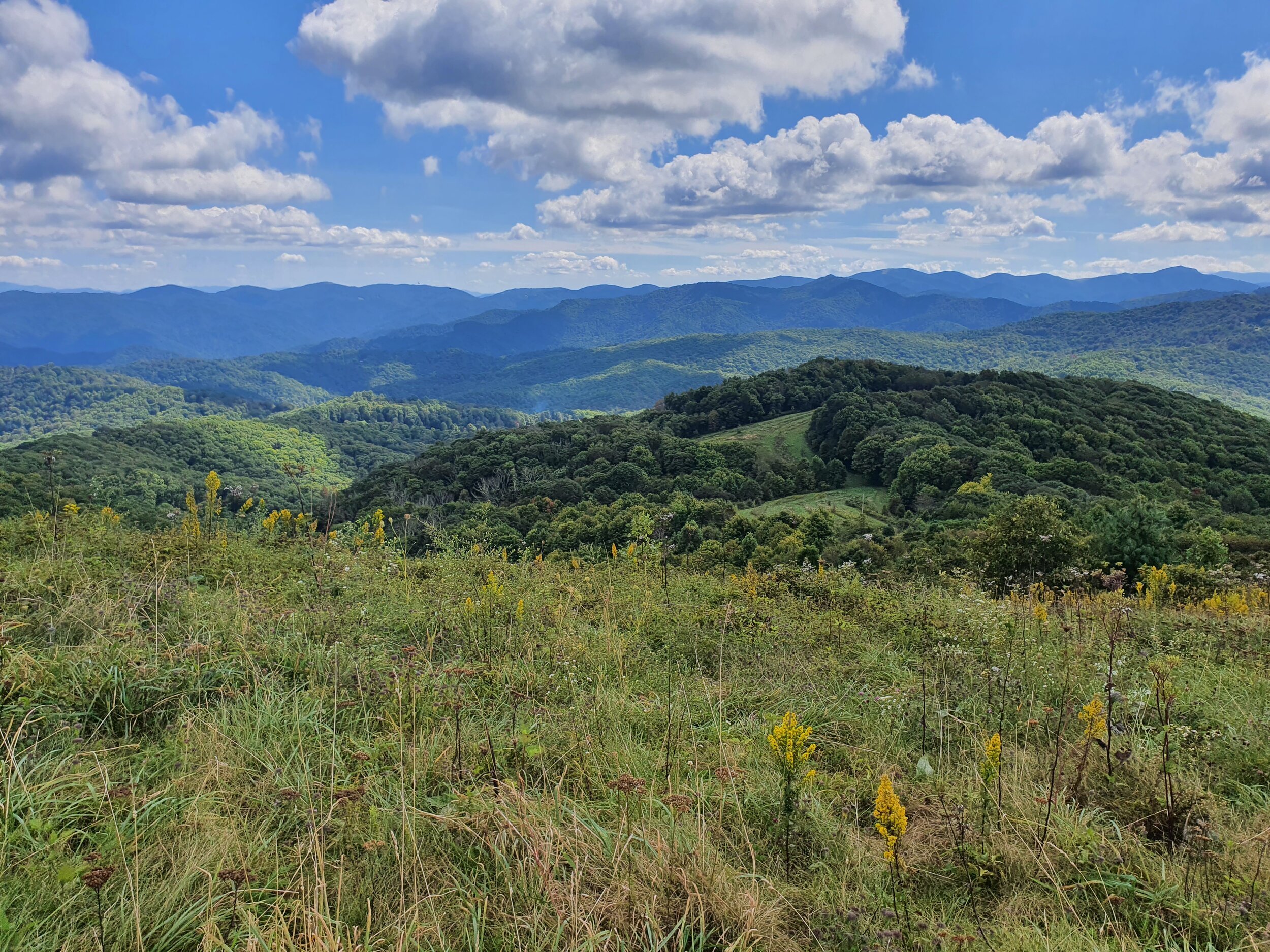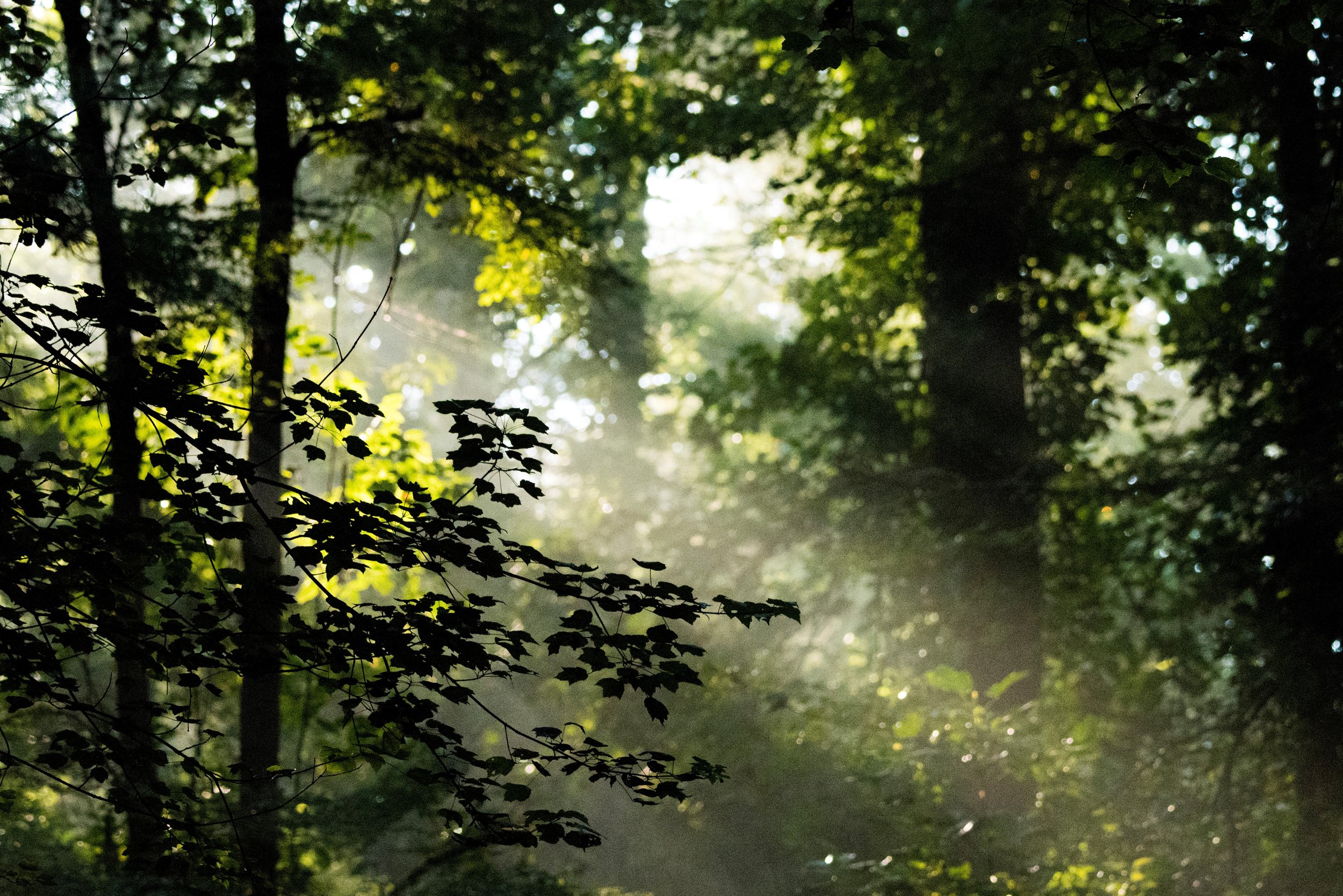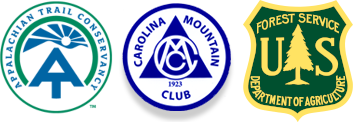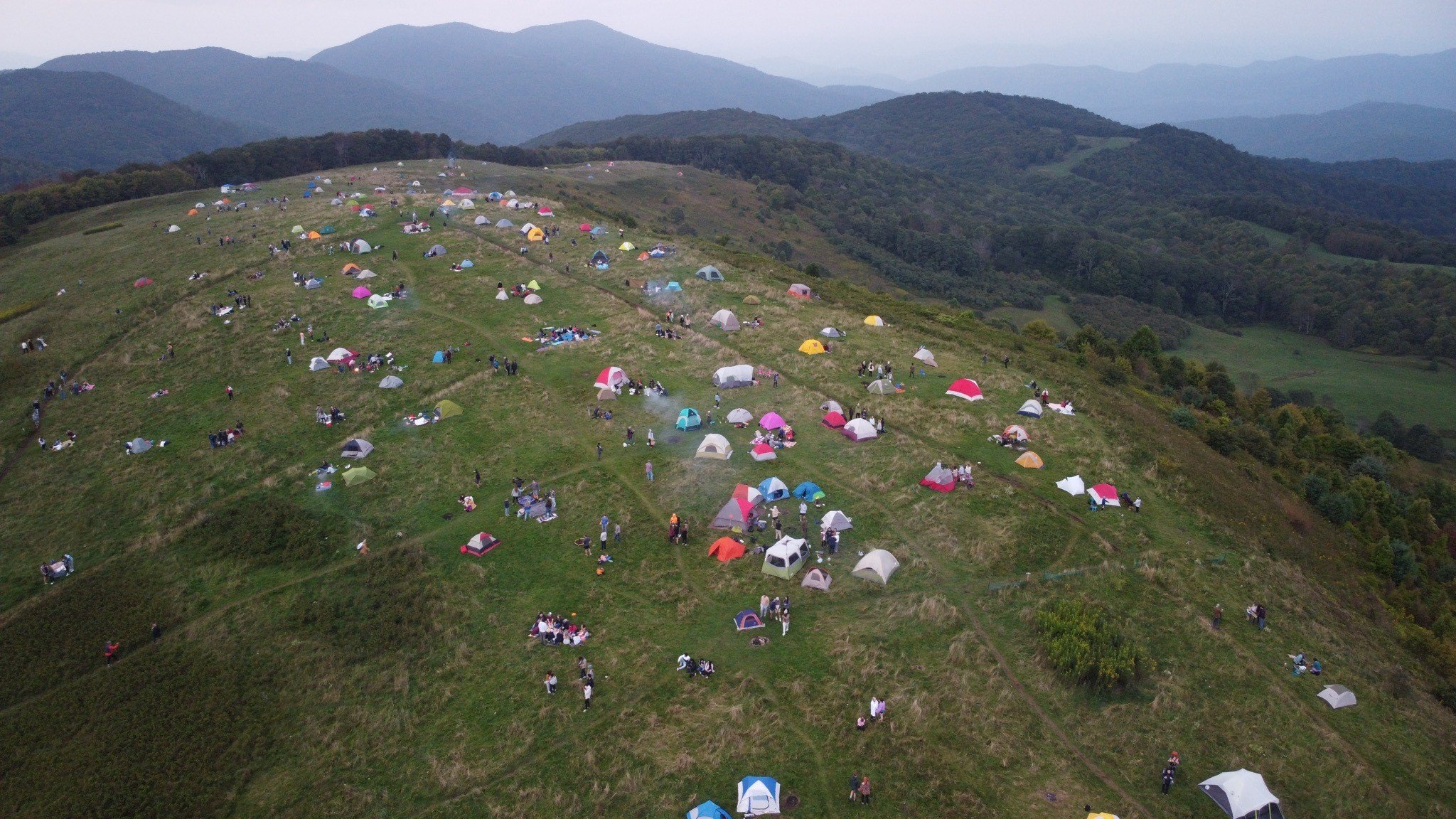
Present Day Challenges and Successes

Keeping it Clean
As with all cherished natural areas, Max Patch requires a conscious and collaborative effort to keep the area pristine and enjoyable for all who visit. A good rule to follow is “pack it in, pack it out” - meaning not to leave any physical remnants of your visit. Treating Max Patch and other natural areas with respect ensures that all visitors have the right to enjoy the experience equally, and helps to preserve our beloved public lands for future generations to come.
Image: USFS
Max Patch has become a focus for media attention in recent years over an abundance of trash, destruction, vandalism and overcrowding on the mountain. Many visitors have been littering heavily, ignoring signs and fences, destroying native plant and wildlife habitat, and creating human health hazards.
-

Trash and blankets left behind by campers
Images courtesy of USFS
-

Scarring and leftover cigarettes from irresponsible campfire use
-

Trash including food waste - harmful to the ecosystem as well as human health
Aerial drone footage from the fall of 2020 showing the rampant overcrowding and destruction at Max Patch:

In light of these issues, the United States Forest Service issued a series of restrictions for Max Patch in July of 2021 in order to help the beloved mountain recover and address threats to visitor health and safety. This includes, among other things, a ban on camping and fires.
These new regulations, combined with the continued efforts of the Carolina Mountain Club, Appalachian Trail Conservancy, U.S. Forest Service and countless volunteers have allowed the area to begin returning to its natural form - a breathtaking mountain full of grassy meadows, abundant wildflowers, and a plethora of native flora and fauna. The mountain’s once widespread litter problem has improved significantly and grasses have begun to grow over some fire rings and user-created trails. While this change is both noticeable and desired, it is not a given and user-created social trails continue to be a major problem. Issues with littering, fire rings, and improper waste disposal remain as well. Maintaining and improving conditions will require a conscious effort from visitors in addition to continued management.
Before:
After:
As you may notice in the photographs above (taken about 1 year apart), the combined efforts of the closure order, continued management, conservation efforts, and more conscientious visitor use have helped initiate a recovery in the Max Patch ecosystem, although social trails and other issues continue to be problems and there is still much work to be done.
Since the closure order was initiated in July, Trail Ambassadors have reported a sharp decline in tent use and fire rings at Max Patch. This is a result of a significant on-the-ground presence from Carolina Mountain Club Ambassadors and the U.S. Forest Service. (Carolina Mountain Club)
Even as visitation has increased significantly into the fall months, negative indicators such as fire rings and toilet paper have decreased. While these statistics indicate progress, many negative indicators such as trash and social trail usage continue to present major issues. (Carolina Mountain Club)
In order for these conditions to continue to improve, it is essential that visitors practice responsible stewardship. When in doubt, remember to stay on trail and follow the seven principles of Leave No Trace:
Plan ahead and prepare
Travel and camp on durable surfaces
3. Dispose of waste properly
4. Leave what you find
5. Minimize campfire impacts
6. Respect wildlife
7. Be considerate of other visitors






